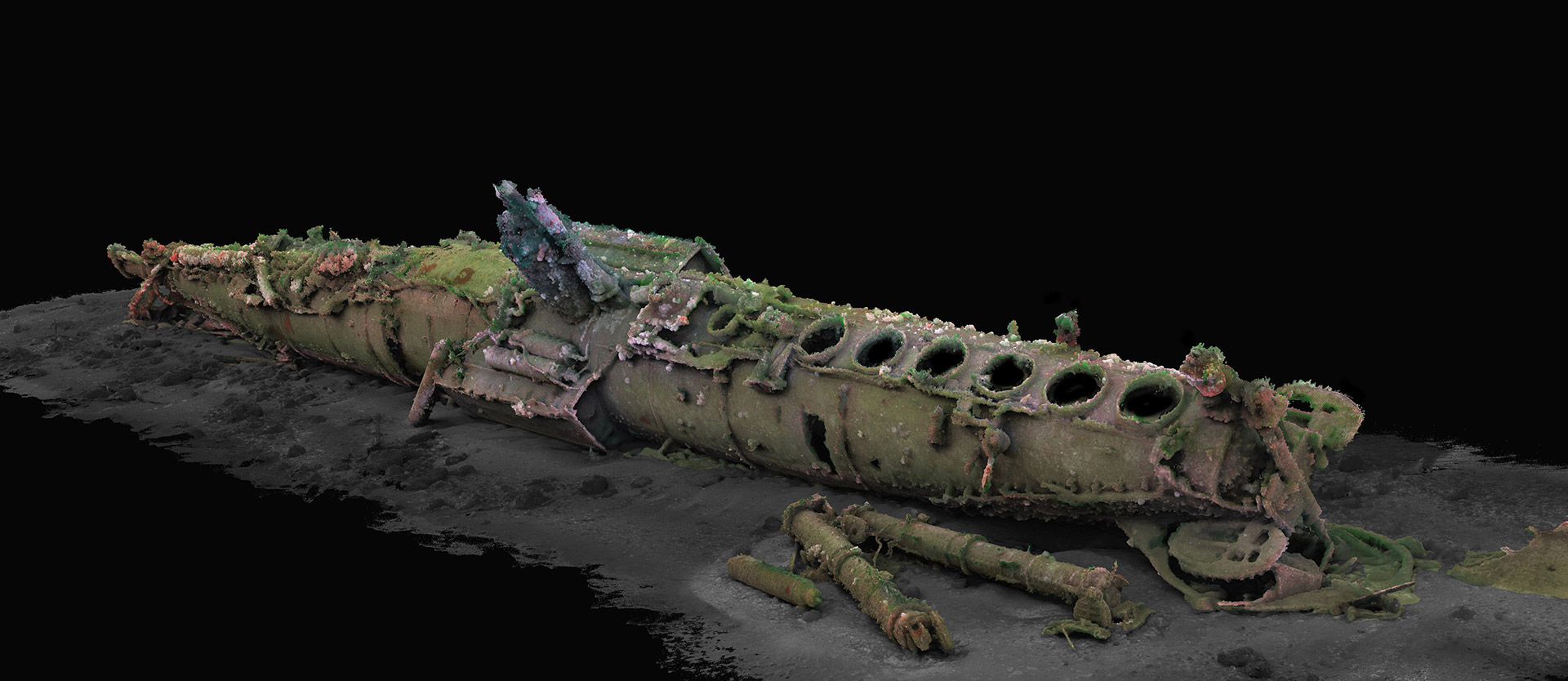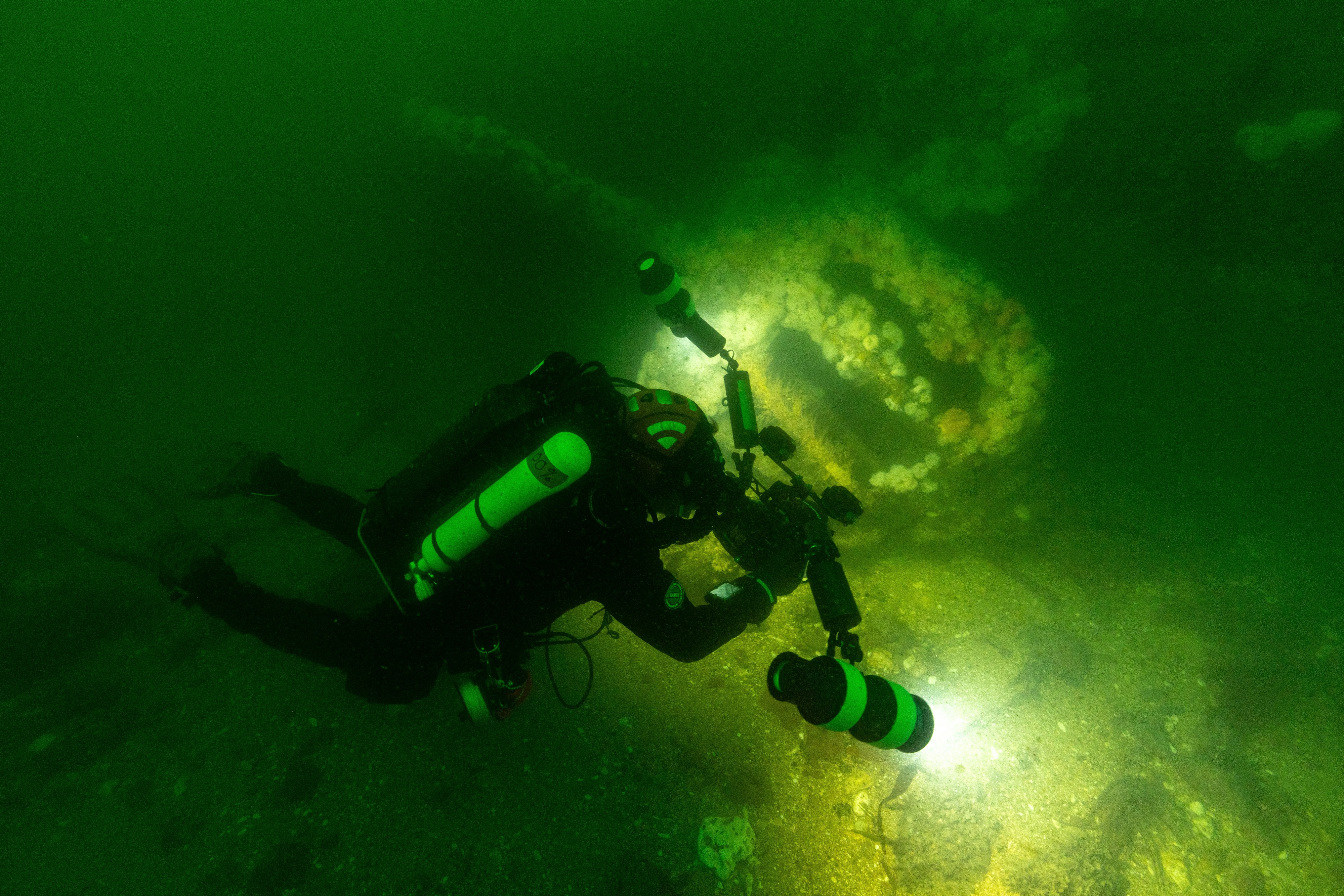
Resurrected through 30,000 images
International research diving team creates impressive 3D model of German World War I submarine wreck UC 71 off Helgoland.

The conditions were conceivably bad: one day after the summer hurricane "Poly" raged across the North Sea at the beginning of July, a research diving team set out for Helgoland to document a monument of a special kind: UC 71, a World War I submarine that mysteriously sank more than 100 years ago and has lain on the ocean floor ever since. In their luggage, the team had around 1.5 tons of equipment. Visibility at the wreck was poor due to the water stirred up by the storm. In addition, there was a strong current and only one hour per dive. Nevertheless, the scientists led by Kiel research diver Dr. Florian Huber succeeded in reaching their goal: To create a detailed 3D model of the submarine for the first time, thus preserving it digitally for posterity.
As a submarine of the Imperial Navy, UC 71 was in service during the First World War. Built in 1916, it sank 61 ships using torpedoes, mines and explosive grenades. Shortly after the war, it sank in 1919 while on a transfer voyage to England just off the southern entrance off the North Sea island of Helgoland - allegedly due to bad weather. However, investigations revealed that the submarine sank itself. The diary of the then 4th engineer Georg Trinks, who lived and fought on UC 71 for 18 months, which was rediscovered at that time, confirmed the self-sinking.
Due to its extraordinary fate and special design, the submarine is of particular importance in terms of military and naval history as well as science. It has therefore been listed as a historical monument since 2012. But after more than 100 years in the stormy and highly dynamic North Sea, the 50-meter-long wreck is slowly but inexorably decaying. That's why a team of specialists from Finland, Scotland and Kiel has now documented the wreck using photogrammetry. For this purpose, Chris Rowland from Scotland and the two Finns Minna Koivikko and Kari Hyttinen traveled to the small North Sea island to document it together with their colleagues Florian Huber, Christian Howe and Philipp Schubert from the Kiel research diving company Submaris. In the process, they filmed every angle of UC 71, which lies at a depth of around 23 meters, with four cameras in 4K resolution. Some 30,000 individual photos were later extracted from the video clips, which were then computed into an accurate digital model using software. "For a few years now, 3D modeling has offered underwater archaeology completely new possibilities for documenting and visualizing underwater sites. The finished models are available for scientific documentation work as well as for presentation and visualization purposes in museums, for example," says Dr. Florian Huber, underwater archaeologist and head of the project. He has already written a book about the history of the submarine in 2018 ("No Englishman Shall Enter the Boat! The Last Voyage of UC 71"). In 2024, the 3D model will now be printed, painted and presented as part of a separate exhibition at the Museum Helgoland.

According to UNESCO, there are about 10,000 World War I shipwrecks worldwide. These wrecks - like those of World War II - are very complex archaeological sites.
According to UNESCO, there are about 10,000 World War I shipwrecks worldwide. These wrecks - like those of World War II - are very complex archaeological sites. They are also a significant historical resource; many of them represented the high level of technology of the 20th century. Moreover, the protection of these underwater sites is important as a reminder of the horrors of war and its history.
Since 2014, World War I cultural heritage has fallen under UNESCO's Convention on the Protection of the Underwater Cultural Heritage. "Through the digital documentation of UC 71, a unique piece of German history can now be preserved and made available to a large audience," says Prof. Chris Rowland of the University of Dundee, Scotland. "As divers, we only ever see a small section because of the limited visibility. Now, for the first time, we can view, explore and share the whole submarine with anyone who is interested. We have made the invisible visible," adds Huber.












